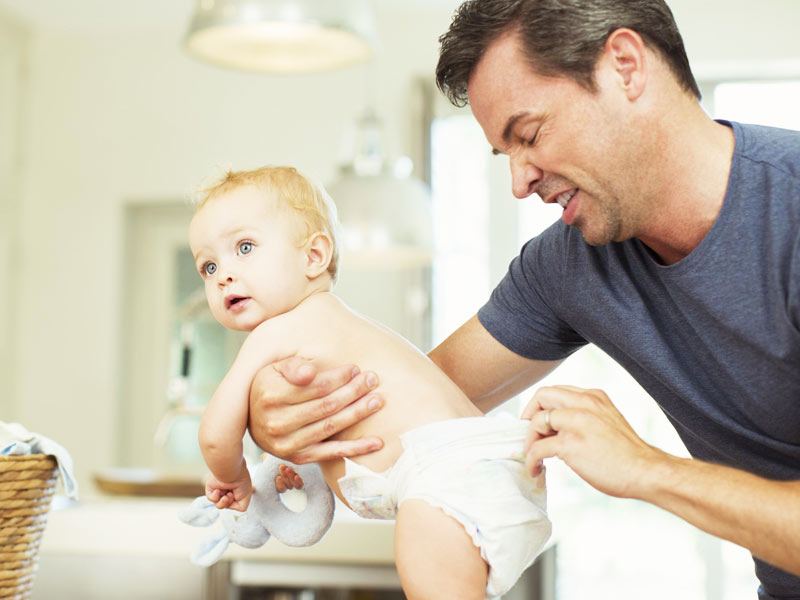
Diaper rash is a common but uncomfortable skin rash that occurs in infants and in babies who are less than 2 years old. It is distressing to see babies suffering from it and causes huge undue stress to the parents. Diaper rash is an inflammatory condition of the skin of the diaper area. It is one of the common skin disorder seen in young infants and generally seen in babies aged 9 months to 1 year. It is most commonly caused by irritation of the skin. It results due to a combination of multiple factors such as increased moisture, prolonged contact with urine or faeces, and other irritants like detergents. Dr Vidheya Venkatesh, Senior Consultant, Neonatologist and Pediatrician at Cloudnine Group of Hospitals, Bengaluru talks about diaper rash in detail and ways to tackle the condition in kids:
Table of Content:-
Types of Diaper Rash
- Contact dermatitis- It develops when something in the diaper, or sometimes the diaper itself, irritates the skin.
- Yeast Infections- A group of fungi normally live in the skin and diaper area. When they grow in excess, however, it can cause a painful diaper rash called candidiasis, or a yeast infection.
- Bacterial skin infections- Newborns and infants are at an increased risk due to skin immaturity and typically the peak incidences occur during or around the 9 to 12 months of age.

Diaper dermatitis occurs in about 50% of infants, and it accounts for about 25% of visits to primary care physicians related to dermatologic complaints in the first year of life. On careful history taking it may be seen that the symptoms usually begin with an increased frequency of stools or changes in its appearance (loose), followed by the development of redness around the diaper area about two days after.
Also Read: Tips To Identify and Diagnose A Viral Rash in Infants
How To Treat Diaper Rash?

Management of diaper dermatitis has two goals: healing of damaged skin, and prevention of rash recurrence. The strategies to achieve these goals include:
Change diapers more frequently to prevent babies from sitting in moisture. Good hygiene is essential to maintain skin integrity. Reducing the exposure to irritants, like urine and faeces, can be achieved with frequent diaper changes, and by having diaper free time. The skin should be cleaned and rough scrubbing, should be avoided which could irritate the skin more. Exposed skin to air without the diaper for several hours if possible.
Bathing and cleaning the diaper area with water and non-irritant cleansing soap solutions. One of the most commonly asked questions is the use of wet wipes. Recent evidences indicate that the use of wet wipes per say does not increase the incidence of the rash. Newer formulations of wet wipes have pH buffers which theoretically help to balance the alkaline pH of the urine and prevent skin damage due to pH changes. If an infant has diaper rash, it is best to clean the diaper area gently using scent-free soap and water from front to back in one stroke with one wipe or cotton. For every new stroke use a fresh wipe or cotton wool ball soaked in water before patting it dry.
Also Read: Heat Rash In Kids: Try These Effective Natural Treatments For Relief

Use topical emollients for both prevention and treatment. They can improve the skin barrier function, and they also provide a barrier between the skin and the diaper, urine, and faeces, not limiting the contact with the skin and diminishing irritation, but also preventing over-hydration to the skin. Use only unscented soaps and apply diaper rash creams thick application with each diaper change.
- When treating candida diaper dermatitis, topical antifungals should be added to the regimen. Antifungal creams can be used first, applied with every diaper change, with a generally good response.
- If the rash has blisters or boils, pus or discharge, please consult a doctor immediately.
- Some home remedies such as use of coconut oil, Epsom salt bath, Aloe vera can also help with the prevention of diaper rash
(With inputs from Dr Vidheya Venkatesh. Senior Consultant, Neonatologist and Pediatrician at Cloudnine Group of Hospitals, Bengaluru)
Read More Articles in Children's Health
Also watch this video
How we keep this article up to date:
We work with experts and keep a close eye on the latest in health and wellness. Whenever there is a new research or helpful information, we update our articles with accurate and useful advice.
Current Version